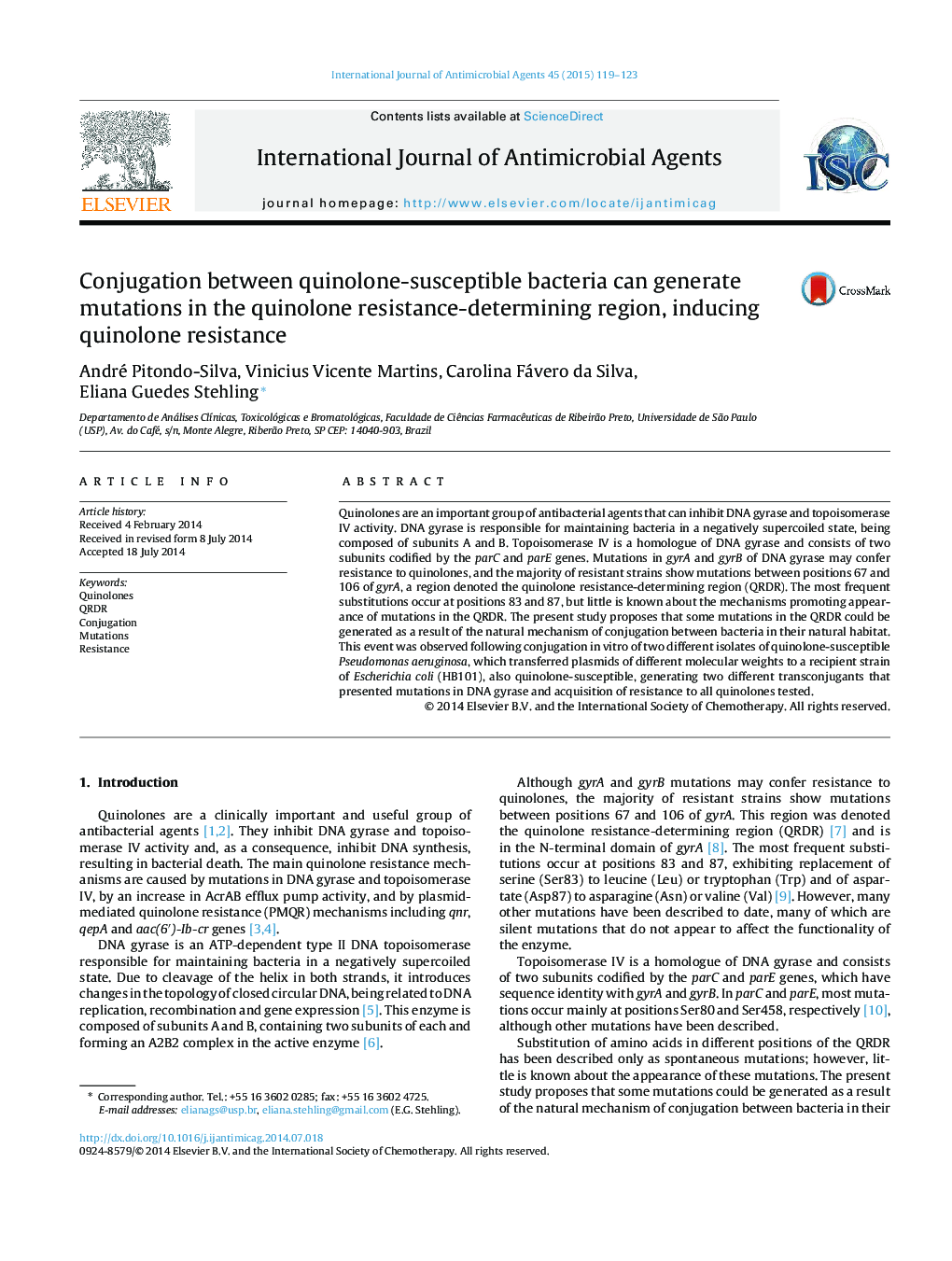| Article ID | Journal | Published Year | Pages | File Type |
|---|---|---|---|---|
| 3358596 | International Journal of Antimicrobial Agents | 2015 | 5 Pages |
•Mutations in the QRDR region are not always random.•Mutations in the QRDR region may involve mechanisms such as natural conjugations.•Mutations in gyrA, parC and parE were found.•Acquisition of resistance to quinolones together with tetracycline is alarming.
Quinolones are an important group of antibacterial agents that can inhibit DNA gyrase and topoisomerase IV activity. DNA gyrase is responsible for maintaining bacteria in a negatively supercoiled state, being composed of subunits A and B. Topoisomerase IV is a homologue of DNA gyrase and consists of two subunits codified by the parC and parE genes. Mutations in gyrA and gyrB of DNA gyrase may confer resistance to quinolones, and the majority of resistant strains show mutations between positions 67 and 106 of gyrA, a region denoted the quinolone resistance-determining region (QRDR). The most frequent substitutions occur at positions 83 and 87, but little is known about the mechanisms promoting appearance of mutations in the QRDR. The present study proposes that some mutations in the QRDR could be generated as a result of the natural mechanism of conjugation between bacteria in their natural habitat. This event was observed following conjugation in vitro of two different isolates of quinolone-susceptible Pseudomonas aeruginosa, which transferred plasmids of different molecular weights to a recipient strain of Escherichia coli (HB101), also quinolone-susceptible, generating two different transconjugants that presented mutations in DNA gyrase and acquisition of resistance to all quinolones tested.
